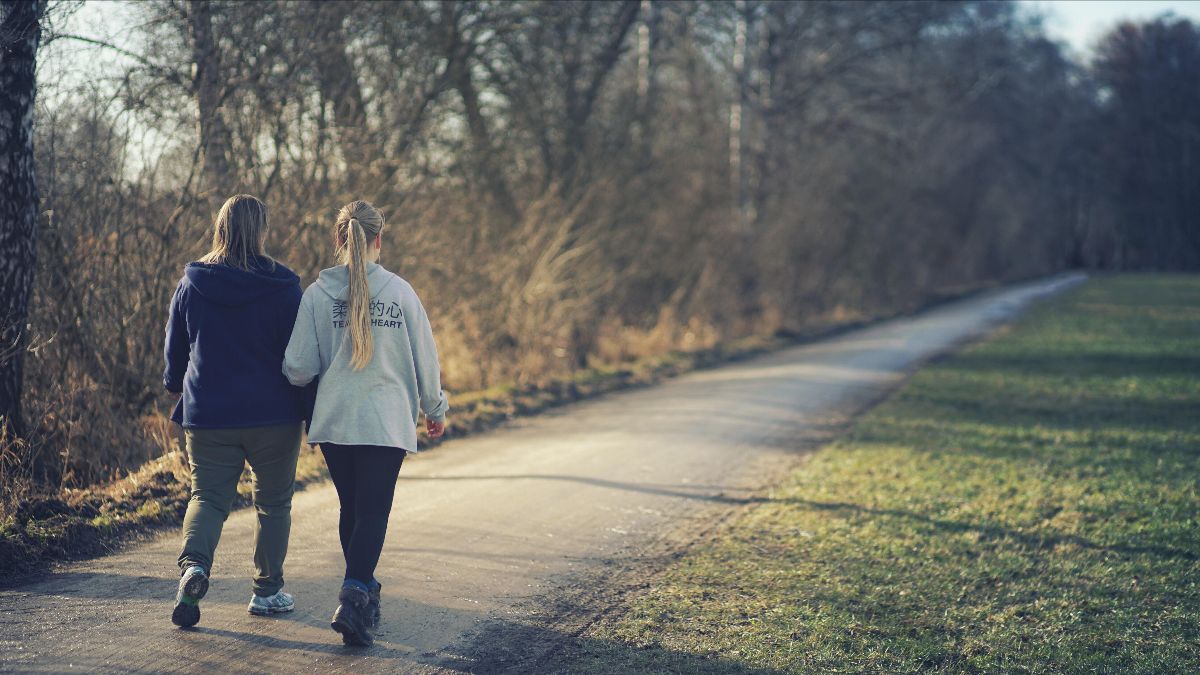
In March, we celebrate storytelling, and the powerful ways that we can use it to convey our histories, shape our futures, entertain, and connect with others. With that in mind, I’m sharing a story about growing up in suburban Ohio and some tools to help you collect and share stories to support your advocacy for walking and biking to everyday destinations.
From first grade to my senior year of high school, I carpooled to school nearly every day with my friend Nihal because we lived less than a mile apart. Over those years, I never walked or biked to his house. Not once. Why? I lived in a different subdivision, separated by a road that I was afraid to dart across because there were no sidewalks or safe places to cross. Plus, the culture in our community at the time normalized parents driving kids everywhere, so our parents did not think twice about it. That isn’t to say I didn’t walk or bike as a kid; I would just loop around and around my subdivision, which was a perfect oval bisected by streets with no street lights or sidewalks. I daydreamed about being able to walk or bike somewhere else, like the library or river park in my community.
That story illustrates my childhood neighborhood better than any map or data could. Looking at the neighborhood on a map, you could likely guess that was the experience of kids living in my neighborhood, but it doesn’t have the same impact as hearing I had my mom drive me less than a 15-minute walk to my friend’s house. While writing this, I visited Ohio’s Highway Patrol Crash Dashboard to see if my childhood hesitation to cross that road on foot was correct and found the roadway covered in different colored stars pinpointing crashes of varying severity over the last five years. I feel justified, and if I lived there now, I would share my story along with that map to advocate for safer crossings along that roadway.
Now, when I do work in communities interested in increasing access to their schools, parks, and other everyday destinations, I try to find the stories. I ask questions like “Where do you go after school, and how do you get there?” and “How does your morning commute to work or school make you feel?” These questions invite stories that illuminate a fuller picture of what it’s like to live in and move through a place, and they can also be powerful tools for showing decision-makers why people want to see changes. Getting from place to place can evoke lots of emotions—fear or nervousness if we are in unsafe environments, or, joy and calm in safe ones. Stories evoke emotions, and emotions bring facts and data to life. Bringing stories and data together is a powerful way to convey a message.
Stories can also be used effectively to illustrate solutions. In my daily work, I often share ideas for what communities can do to slow cars down or make people feel safer while walking and biking. However, the single most common question I get is whether I have stories of other communities implementing those strategies. That’s when I share examples like when the United Neighborhood Association of South Wenatchee worked with their city to install flashing stop signs because they had stories of cars not stopping for them and their children on the way to the park or grocery store. It has a happy ending, the number of cars coming to a full stop at one location went from 13 percent to 81 percent after they switched out traditional stop signs for ones that had flashing lights.
Think about your experiences of walking and biking and the stories that you can tell about your community—what you love and what you want to make better. To go a step further, ask your friends, family, and neighbors for their stories about the neighborhood, walking to school, or their favorite parks. Here are some resources that will help:
- This storytelling toolkit can help you ethically collect and share stories as well as help others share their own stories. The goal of providing these resources is to support partners to effectively tell the stories of their work, center the voices of our communities, and translate stories into actionable community-based strategies. This toolkit was created by Pueblo Planning and Safe Routes Partnership
- If you are interested in stories as a data collection approach, explore the Safe Routes to Parks Evaluation Guide: Steps and Tips to Assess and Inform Efforts to Improve Park Access. It outlines how to use tools like interviews and focus groups for assessing access needs.
March 14th is National Write Your Story Day and March 20th is World Storytelling Day. Take time this month to tell your Safe Routes to School story, listen to the stories of students and community members, and elevate these stories to make change. If you share online, use the hashtag #SRTSstory.

